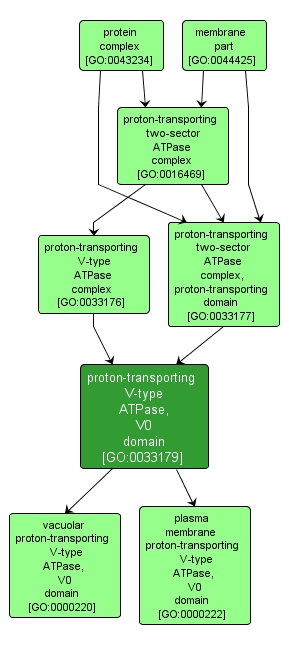GO TERM SUMMARY
|
| Name: |
proton-transporting V-type ATPase, V0 domain |
| Acc: |
GO:0033179 |
| Aspect: |
Cellular Component |
| Desc: |
A protein complex that forms part of a proton-transporting V-type ATPase and mediates proton transport across a membrane. The V0 complex consists of at least four different subunits (a,c,d and e); six or more c subunits form a proton-binding rotor ring. |
|

|
INTERACTIVE GO GRAPH
|














